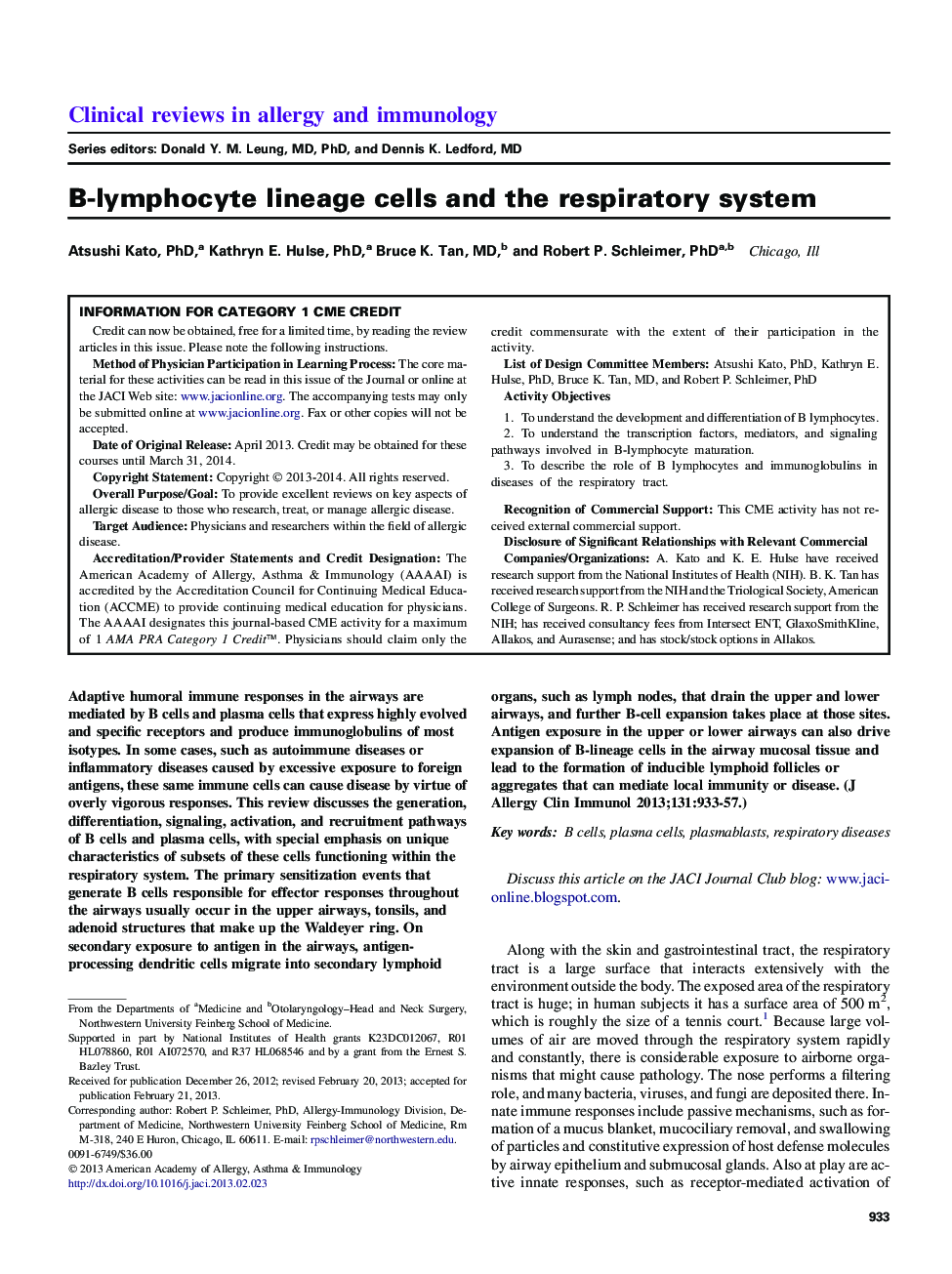| Article ID | Journal | Published Year | Pages | File Type |
|---|---|---|---|---|
| 6066433 | Journal of Allergy and Clinical Immunology | 2013 | 25 Pages |
Abstract
Adaptive humoral immune responses in the airways are mediated by B cells and plasma cells that express highly evolved and specific receptors and produce immunoglobulins of most isotypes. In some cases, such as autoimmune diseases or inflammatory diseases caused by excessive exposure to foreign antigens, these same immune cells can cause disease by virtue of overly vigorous responses. This review discusses the generation, differentiation, signaling, activation, and recruitment pathways of B cells and plasma cells, with special emphasis on unique characteristics of subsets of these cells functioning within the respiratory system. The primary sensitization events that generate B cells responsible for effector responses throughout the airways usually occur in the upper airways, tonsils, and adenoid structures that make up the Waldeyer ring. On secondary exposure to antigen in the airways, antigen-processing dendritic cells migrate into secondary lymphoid organs, such as lymph nodes, that drain the upper and lower airways, and further B-cell expansion takes place at those sites. Antigen exposure in the upper or lower airways can also drive expansion of B-lineage cells in the airway mucosal tissue and lead to the formation of inducible lymphoid follicles or aggregates that can mediate local immunity or disease.
Keywords
transmembrane activator and CAML interactoriBALTOVABALBLNKB-cell maturation antigenPLCγ2ILFTLRPIP3PKCNasopharynx-associated lymphoid tissueNIKCRSwNPNF-κBBCMACVIDTACIActivation-induced cytidine deaminaseIRFTFHCD40LIPFMyeloid differentiation primary response gene–88CSRMYD88B-cell linker proteinB cell–activating factor of the TNF familyphospholipase Cγ2HEVSHMERKPI3KBCRCRSEBI2CTDiNOSBtkMAPKNALTPhosphatidylinositol-3,4,5-TriphosphatepIgRsIgARheumatoid arthritisSTATAPRILsomatic hypermutationsecondary lymphoid organsloOvalbuminBAFFBruton tyrosine kinaseObliterative bronchiolitisSykChronic obstructive pulmonary diseaseCOPDRespiratory diseasesSecretory IgAToll-like receptorChronic rhinosinusitis with nasal polypsChronic rhinosinusitisDendritic cellB cellsplasma cellsinducible nitric oxide synthaseGlobal Initiative for Chronic Obstructive Lung Diseasespleen tyrosine kinaseGoldinterferon regulatory factornuclear factor κBphosphoinositide 3-kinaseIsolated lymphoid follicleidiopathic pulmonary fibrosisbronchoalveolar lavageSystemic lupus erythematosusSLECD40 ligandSignal transducer and activator of transcriptionimmune complexGerminal centermarginal zoneclass-switch recombinationhigh endothelial venuleProtein kinase Cmitogen-activated protein kinasePlasmablastsHypersensitivity pneumonitisCommon variable immune deficiencyAIDextracellular signal-regulated kinaseLymph nodepolymeric immunoglobulin receptorB-cell receptora proliferation-inducing ligand
Related Topics
Life Sciences
Immunology and Microbiology
Immunology
Authors
Atsushi PhD, Kathryn E. PhD, Bruce K. MD, Robert P. PhD,
